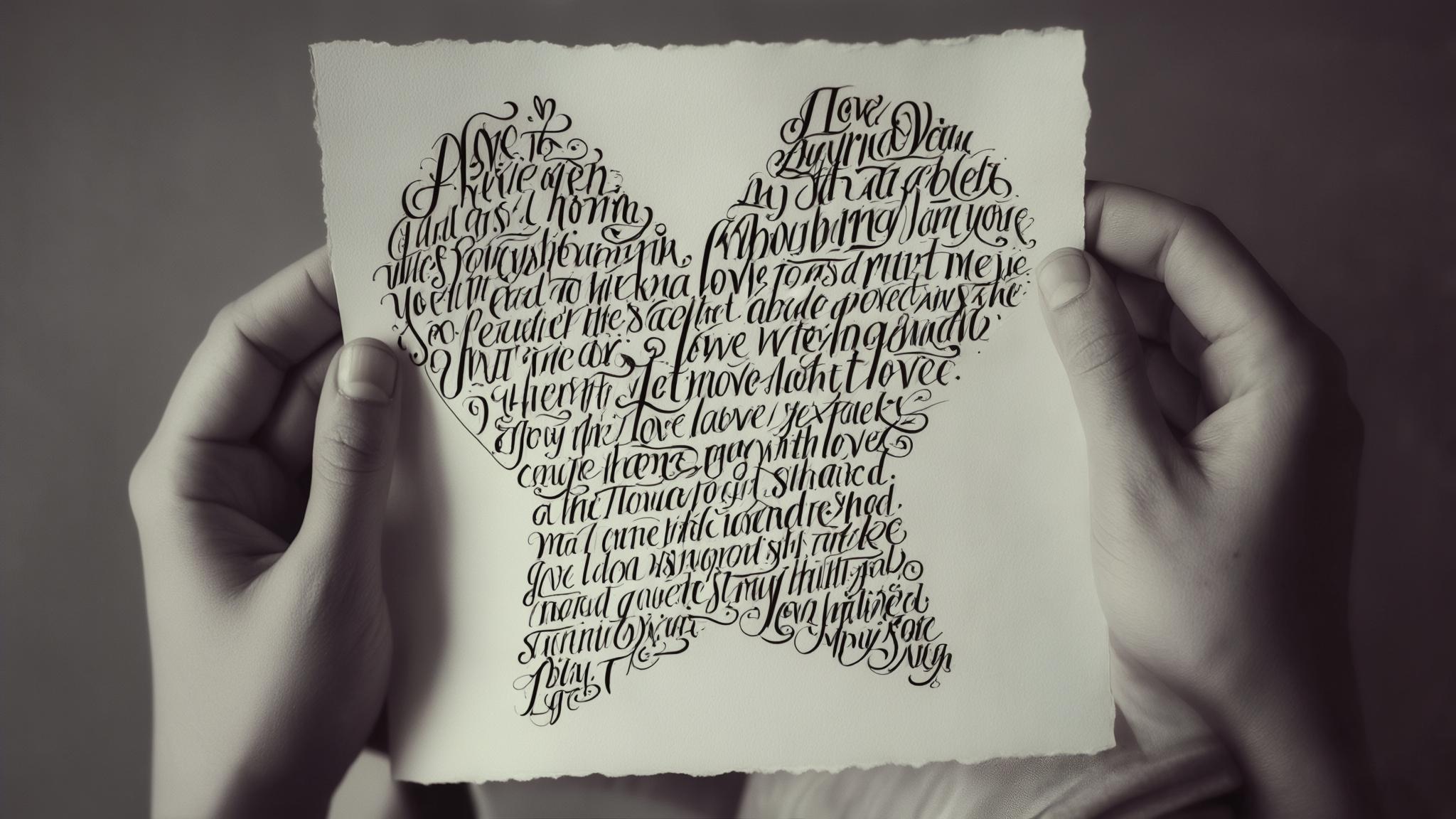Hi, Friend! Jen Glantz here. I’m a bestselling author, the first ever bridesmaid for hire and have been hired by hundreds of brides all over the world. Let’s talk about shape poem examples.
Shape poems combine visual art with written expression, creating powerful literary pieces where the arrangement of text forms meaningful images. These concrete poems demonstrate how typography, spacing, and creative formatting can enhance emotional impact and reader engagement. Understanding quality shape poem examples helps writers develop their own visual poetry skills while appreciating this unique art form that bridges literature and visual design.
Shape poems require careful balance between visual appeal and textual meaning, ensuring the chosen form enhances rather than distracts from the poem’s message. The most effective concrete poetry demonstrates technical proficiency in typography, spacing, and line arrangement while maintaining readability and emotional resonance.
According to classroom poetry research, teachers consistently choose shape poems as low-intimidation introductions to poetry units because they don’t require rhyming skills. I remember my first encounter with concrete poetry in middle school – staring at a poem shaped like a tree, suddenly realizing that words could become pictures. That moment changed how I viewed creative expression entirely.
Compose a touching love message with our free AI Love Letter Generator
Shape poetry offers writers freedom from traditional constraints while opening new possibilities for artistic communication, similar to how creative wedding vow ideas allow couples to express their unique love stories. You can transform simple observations into visual masterpieces that speak to readers on multiple levels.
Generate heartfelt vows with our Wedding Vow Generator
TL;DR
- Shape poems combine visual design with written content to create memorable artistic expressions
- Quality examples demonstrate harmony between form and meaning rather than decorative arrangements
- Nature themes, everyday objects, emotions, seasons, and animals provide rich inspiration for concrete poetry
- Technical execution requires attention to typography, spacing, and readability while maintaining visual impact
- Shape poetry can enhance special occasions through personalized, creative written expressions
Quick Resources
What Makes Shape Poem Examples Worth Studying
Evaluating shape poem examples requires understanding specific criteria that separate exceptional concrete poetry from simple text arrangements. Quality shape poems achieve visual-text harmony where the chosen form meaningfully enhances the written content. Technical execution, originality, accessibility, emotional impact, and educational value serve as essential benchmarks for identifying superior examples of shape poems that inspire and teach effective concrete poetry techniques.
Visual-text harmony creates synergy between form and meaning, ensuring the shape choice supports rather than overshadows the poem’s message and emotional intent. When I examine concrete poem examples, I look for that perfect moment where the visual form and written words become inseparable – where removing either element would diminish the overall impact.
Find your ideal palette with our free Color Analysis Quiz
Technical proficiency encompasses typography choices, spacing decisions, line breaks, and formatting that contribute to both visual appeal and reading rhythm when spoken aloud. The best shape poem examples demonstrate mastery over these elements without sacrificing readability or emotional connection.
| Quality Assessment Criteria | Poor Example | Good Example | Excellent Example |
|---|---|---|---|
| Visual-Text Harmony | Shape unrelated to content | Basic shape connection | Perfect form-meaning synergy |
| Technical Execution | Messy formatting, poor spacing | Clean layout, readable text | Professional typography, strategic spacing |
| Originality | Overused shapes (basic heart) | Familiar but well-executed | Innovative, unexpected approaches |
| Accessibility | Difficult to read/understand | Generally comprehensible | Clear reading path, universal appeal |
| Emotional Impact | Little connection to reader | Moderate engagement | Strong emotional resonance |
Visual-Text Harmony Creates Meaningful Connections
The strongest concrete poem examples establish clear relationships between their visual form and written content, avoiding purely decorative arrangements. This harmony ensures readers understand why the poet chose specific shapes while enhancing their emotional connection to the text. Successful examples demonstrate how visual elements can amplify meaning rather than simply illustrate topics.
Meaningful shape selection requires poets to consider how visual form can reinforce themes, emotions, or concepts within their written content. I’ve seen too many attempts where writers force text into random shapes without considering whether the visual choice actually serves the poem’s purpose.
Technical Execution Determines Reader Experience
Clean typography, purposeful spacing, and strategic line breaks distinguish professional-quality shape poems from amateur attempts. These technical elements affect both visual impact and reading rhythm, ensuring poems remain accessible while achieving their artistic goals. Careful attention to formatting details creates polished results that engage readers effectively.
Typography choices and spacing decisions directly influence how readers navigate through the poem and absorb its meaning. When you’re crafting your own shape poems, remember that every formatting decision should serve both the visual design and the reading experience.
Originality and Creativity Set Examples Apart
Exceptional shape poetry demonstrates innovative approaches to combining text and visual elements, offering fresh perspectives on familiar subjects. Creative examples inspire other writers while showcasing unique interpretations that haven’t been explored extensively. Original thinking in shape selection and execution creates memorable pieces that stand out from common approaches.
Innovation in shape poetry involves finding unexpected visual representations or presenting familiar concepts through surprising formatting choices. The most memorable examples I’ve encountered take risks with unconventional shapes or present common themes through completely fresh visual perspectives.
Accessibility Maintains Reader Engagement
Quality shape poems remain comprehensible despite creative formatting, ensuring visual elements enhance rather than hinder understanding. Clear reading paths and logical text flow prevent confusion while maintaining artistic integrity. Accessible design allows diverse audiences to appreciate both visual and textual components without struggling to decode the poet’s intentions.
Reader accessibility requires careful consideration of text flow and visual clarity to prevent artistic choices from creating comprehension barriers. You want your audience to experience the joy of discovery, not the frustration of trying to decipher illegible text arrangements.
Nature and Environmental Poetry Shapes
Nature-themed shape poems offer rich opportunities for visual-text harmony through organic forms and environmental imagery. These examples demonstrate how natural shapes can enhance poems about trees, weather, landscapes, and seasonal changes. Writers can explore vertical structures, flowing patterns, curved arrangements, and radial designs that mirror natural phenomena while expressing environmental themes and observations.
Natural forms provide intuitive shape choices that readers easily recognize while offering symbolic depth for environmental and seasonal themes. When I work with nature-inspired concrete poems, I find that organic shapes allow for varied line lengths and creative spacing that can mimic natural rhythms and movements found in nature.
1. “The Tree” – Classic Vertical Structure
This foundational shape poem uses ascending line lengths to create a tree silhouette, progressing from narrow “leaves” at the top to wide “roots” at the bottom. The visual progression mirrors actual tree anatomy while exploring themes of growth, stability, and foundation. Each line represents different tree components, creating both literal and metaphorical depth about personal development and natural strength.
Vertical progression from narrow to wide creates recognizable tree shape while allowing thematic exploration of growth and foundation concepts. Tree-shaped poems remain popular because they offer such clear visual recognition while supporting diverse thematic content.
“Growing Strong” – Tree Shape Poem
Leaves
whisper
secrets
in morning
light, dancing
on gentle breezes
that carry dreams and
hopes toward tomorrow's
promise of new growth and
endless possibilities for those
who stand firmly rooted in truth
and stretch their branches toward
the sun with unwavering faith in
their ability to weather any storm
and emerge stronger, more beautiful
than before, deeply grounded in love
and reaching always upward toward light
spreading shade and shelter for all who
seek refuge beneath their protective canopy
2. “Raindrop Journey” – Diagonal Flow Pattern
The diagonal arrangement traces a raindrop’s path from cloud formation to ocean destination, with text compression increasing as the “drop” falls. This creates visual momentum and urgency that enhances the reading experience. The shape choice reinforces themes about water cycles, journey, and natural processes while demonstrating how formatting can create movement within static text.
Diagonal text arrangement creates visual movement and urgency that reinforces the poem’s themes about falling and natural water cycles. I love how this shape poem technique transforms the reading experience into something that feels kinetic and alive.
3. “Ocean Wave” – Curved Undulation
Wave-shaped horizontal curves simulate ocean movement through alternating text placement and spacing. The poem’s rhythm matches natural wave patterns, creating both visual and auditory poetry that captures oceanic themes. This shape poem shows how curved arrangements can represent natural phenomena while maintaining readability and thematic coherence throughout the piece.
Curved horizontal arrangements require careful spacing to maintain wave-like visual flow while ensuring text remains readable and thematically coherent. The challenge with wave-shaped poems lies in creating that flowing motion without sacrificing comprehension.
4. “Mountain Peak” – Triangular Ascension
The triangular mountain shape poem represents both physical geography and metaphorical achievement, with each ascending line symbolizing steps toward reaching goals. Text content explores themes of determination, challenge, and success while the visual form reinforces the climbing metaphor. This example demonstrates how geometric shapes can support both literal and symbolic interpretations.
Triangular shapes provide clear geometric structure that supports both literal mountain imagery and metaphorical themes about achievement and perseverance. Mountain-shaped poems work particularly well for graduation ceremonies or personal milestone celebrations.
5. “Butterfly Wings” – Symmetrical Beauty
Perfect symmetrical design mirrors butterfly wing structure while repetitive text creates movement and lightness appropriate to the subject. The visual balance reinforces themes about natural beauty, transformation, and freedom. This shape poem showcases how symmetry can enhance both visual appeal and thematic content while maintaining technical precision in formatting.
Symmetrical arrangements require precise formatting to achieve visual balance while using repetitive text patterns to reinforce themes about movement and transformation. Creating truly symmetrical shape poems demands patience and attention to detail that many writers underestimate.
6. “Spiral Shell” – Circular Progression
The spiral arrangement mimics nautilus shell chambers while following natural mathematical curves found in marine life. Text flows along the spiral path, telling stories about ocean treasures and time. This shape poem demonstrates how complex geometric patterns can represent natural phenomena while maintaining narrative coherence and visual appeal.
Spiral patterns require careful text placement to follow natural curves while maintaining narrative flow and visual recognition of shell structures. These challenging arrangements reward readers with both visual beauty and mathematical elegance.
7. “Lightning Strike” – Jagged Energy
Zigzag patterns capture lightning’s unpredictable path while varied typography adds auditory elements to visual design. The irregular arrangement reflects natural electrical phenomena while text explores themes about power, energy, and natural forces. This shape poem shows how irregular shapes can effectively represent chaotic natural events.
Irregular zigzag patterns effectively represent chaotic natural phenomena while varied typography can add auditory dimensions to visual poetry. Lightning-shaped poems offer opportunities to experiment with dramatic formatting that mirrors the subject’s intensity.
8. “Flower Bloom” – Radial Expansion
Radial text arrangement suggests petals opening outward, with content expanding to mirror natural growth patterns. The shape poem explores seasonal renewal, hope, and natural beauty while the visual form reinforces blooming metaphors. This example demonstrates how radial designs can represent growth and expansion themes effectively.
Radial text expansion creates visual representation of blooming while allowing thematic exploration of growth, renewal, and natural beauty cycles. Flower-shaped poems work beautifully for spring celebrations or personal growth milestones.
Everyday Objects as Poetic Forms
Common objects provide accessible inspiration for shape poetry, allowing writers to explore familiar items through creative visual arrangements. These examples transform routine items into artistic expressions while maintaining relatability for diverse audiences. Everyday object poems can address contemporary concerns, daily rituals, and shared human experiences through recognizable visual forms that enhance thematic content.
Familiar object shapes provide immediate visual recognition while offering opportunities to explore contemporary themes and shared human experiences. When I create shape poems using everyday items, I find that common objects allow poets to address daily life, technology concerns, and routine experiences through accessible visual metaphors that resonate with broad audiences.
9. “Coffee Cup” – Cylindrical Comfort
The cup shape poem contains morning routine narratives while steam rises from the top, creating cozy imagery about daily rituals. This example explores themes about comfort, routine, and energy while using familiar object recognition to enhance reader connection. The visual form supports content about awakening, preparation, and daily habits that many readers share.
Cylindrical shapes with rising elements effectively represent containers and their contents while exploring themes about daily routines and comfort rituals. Coffee cup shape poems tap into nearly universal experiences that most readers can immediately relate to.
10. “Smartphone Screen” – Rectangular Reality
Rectangular borders mimic phone screens while content critiques digital overwhelm and technology relationships. The form enhances messages about screen time, digital connection, and modern isolation. This contemporary shape poem demonstrates how shape poetry can address current social concerns through relevant visual metaphors that readers immediately recognize.
Rectangular frames create immediate recognition of digital devices while providing structure for exploring contemporary technology concerns and social commentary. Smartphone-shaped poems offer timely opportunities to examine our relationship with technology through creative formatting.
11. “Clock Face” – Circular Time
Circular arrangement represents clock faces while exploring time’s cyclical nature and constant progression. The visual form reinforces temporal themes about routine, progression, and life’s rhythms. This shape poem shows how geometric circles can effectively represent abstract concepts while maintaining concrete visual recognition through familiar object association.
Circular arrangements effectively represent cyclical concepts while maintaining visual recognition through familiar timepiece imagery and temporal themes. Clock-shaped poems work particularly well for anniversary celebrations or reflections on time’s passage.
12. “House” – Architectural Stability
Simple house shapes with triangular roofs and rectangular bases create security and warmth imagery while text reinforces themes about home, belonging, and safety. The architectural form provides stability metaphors that enhance content about family, welcome, and domestic comfort. This shape poem demonstrates how basic geometric combinations can create powerful emotional associations.
Basic architectural shapes combine geometric elements to create stability metaphors while reinforcing themes about security, belonging, and domestic comfort. House-shaped poems resonate deeply because home represents such fundamental human needs and desires.
“Home Sweet Home” – House Shape Poem
/\
/ \
/____\
| |
| LOVE |
| LIVES|
| HERE |
|______|
Where laughter echoes through hallways
And memories are made around dinner tables
Where children's footsteps thunder overhead
And bedtime stories create magical worlds
Where morning coffee tastes like possibility
And evening conversations heal the day's wounds
13. “Car Journey” – Horizontal Movement
Car profile shapes suggest forward movement while text captures journey and discovery themes associated with travel. The horizontal arrangement creates momentum that enhances content about adventure, freedom, and exploration. This shape poem shows how vehicle shapes can represent both literal transportation and metaphorical life journeys.
Horizontal vehicle profiles create visual momentum that reinforces themes about journey, discovery, and forward movement in both literal and metaphorical contexts. Car-shaped poems work well for graduation gifts or travel-themed celebrations.
14. “Light Bulb” – Illuminated Ideas
Bulb shapes perfectly match illumination metaphors while text flows from bright concepts to practical solutions. The visual form reinforces connections between physical light and mental inspiration. This shape poem demonstrates how object shapes can enhance metaphorical content while maintaining clear visual recognition and thematic coherence.
Light bulb shapes create perfect visual metaphors for ideas and inspiration while allowing text flow from conceptual brightness to practical problem-solving applications. These shape poems work wonderfully for educational settings or creative brainstorming sessions.
Emotional and Abstract Visual Poetry
Abstract concepts and emotions present unique challenges for shape poetry, requiring creative visual interpretations that make intangible feelings tangible through form. These examples demonstrate how poets can represent complex emotional states, personal growth, and psychological concepts through carefully chosen shapes. Abstract shape poetry often relies on universal symbols and geometric patterns to convey internal experiences.
Abstract concepts require creative visual interpretation to make intangible emotions and ideas accessible through recognizable shapes and symbolic representations. When I work with emotional shape poetry, I find that these pieces often employ universal symbols and geometric patterns that readers can connect to their own internal experiences and psychological states.
| Emotional Concept | Visual Representation | Shape Poetry Techniques | Reader Connection |
|---|---|---|---|
| Love | Heart, intertwining lines | Curved arrangements, rhythmic text | Universal symbol recognition |
| Grief | Teardrops, downward flow | Descending text, compression | Shared emotional experience |
| Growth | Spirals, ascending patterns | Expanding arrangements | Personal development themes |
| Confusion | Maze, scattered text | Complex patterns, multiple paths | Problem-solving relatability |
| Hope | Bridges, upward movement | Connecting elements, rising text | Aspirational messaging |
| Wonder | Question marks, stars | Curious arrangements, open-ended | Intellectual engagement |
15. “Heart” – Love’s Geography
Heart shape poems contain emotional language while text rhythm mimics heartbeats, creating both visual and auditory poetry. The familiar symbol enhances content about love, passion, and life force while the arrangement reinforces physical and emotional connections. This shape poem shows how iconic shapes can support both literal and metaphorical interpretations of human experience.
Heart shapes provide universal emotional recognition while allowing text rhythm to mimic physical heartbeats and reinforce themes about love and life force. Despite being somewhat overused, heart-shaped poems remain powerful because they tap into such fundamental human experiences.
16. “Tears” – Emotional Release
Teardrop shape poems visualize emotional release while text descent mirrors crying and healing processes. The visual form captures both the physical act of weeping and the gradual path toward emotional recovery. This example demonstrates how simple shapes can represent complex emotional journeys from grief to healing.
Teardrop shapes effectively visualize emotional release while descending text arrangement mirrors both physical crying and psychological healing processes. These shape poems offer cathartic experiences for both writers and readers processing difficult emotions.
17. “Spiral Staircase” – Personal Growth
Spiral arrangements suggest continuous upward movement while text explores personal development and self-improvement themes. The visual form reinforces concepts about progress, learning, and becoming better versions of ourselves. This shape poem shows how architectural shapes can represent abstract concepts about human development and life progression.
Spiral staircase shapes create visual metaphors for continuous personal growth while allowing exploration of themes about self-improvement and life progression. These complex arrangements challenge both writers and readers to think about growth as an ongoing process rather than a destination.
18. “Maze” – Life’s Complexity
Maze structures represent complicated life decisions while text offers hope for finding direction through confusion. The visual complexity mirrors psychological states about choice, uncertainty, and eventual clarity. This shape poem demonstrates how complex geometric patterns can represent internal struggles and the search for purpose.
Maze structures effectively represent decision-making complexity while providing visual metaphors for psychological confusion and the search for life direction. Creating maze-shaped poems requires careful planning to ensure readers can navigate both the visual and textual elements successfully.
19. “Bridge” – Connection and Transition
Bridge shape poems symbolize connection and transition while text explores themes about overcoming obstacles and finding common ground. The architectural form represents both physical and metaphorical passage from one state to another. This example shows how structural shapes can enhance content about relationships, change, and hope.
Bridge shapes create powerful metaphors for connection and transition while representing both physical passage and metaphorical relationship building. These shape poems work particularly well for wedding ceremonies or reconciliation themes.
20. “Question Mark” – Curiosity and Wonder
Question mark shape poems embody curiosity while text celebrates human drives to explore and understand our world. The punctuation symbol reinforces themes about inquiry, mystery, and the search for knowledge. This example demonstrates how typographic symbols can become poetic forms that enhance content about learning and discovery.
Question mark shapes directly embody curiosity and inquiry while reinforcing themes about human drives to explore, learn, and understand mysteries. These shape poems encourage reader engagement through their inherently inquisitive nature.
Seasonal and Holiday Shape Poems
Seasonal and holiday themes provide rich inspiration for shape poetry through recognizable symbols and cultural associations. These examples demonstrate how poets can capture celebratory moods, seasonal changes, and cultural traditions through familiar visual forms. Holiday shape poems often combine nostalgic elements with contemporary observations about celebration, family, and community experiences.
Seasonal shapes draw from recognizable cultural symbols that immediately evoke specific times of year and associated emotions or memories. When I create holiday poetry, I find that these pieces combine nostalgic elements with contemporary observations while using familiar visual forms to enhance celebratory themes and community experiences.
21. “Christmas Tree” – Holiday Joy
Triangular tree shape poems contain holiday imagery while text captures warmth and togetherness of Christmas celebrations. The familiar symbol enhances content about family, tradition, and seasonal joy while the visual form reinforces themes about gathering, giving, and celebration. This shape poem shows how holiday symbols can support both personal and universal experiences.
Christmas tree shapes provide immediate holiday recognition while allowing exploration of themes about family togetherness, tradition, and seasonal celebration. These shape poems work beautifully for holiday cards or family memory books.
22. “Jack-o’-lantern” – Halloween Spirit
Rounded pumpkin shape poems with triangular features create recognizable Halloween imagery while text balances spooky and fun elements. The seasonal symbol enhances content about autumn, childhood memories, and playful fear. This shape poem demonstrates how holiday shapes can capture both traditional and contemporary celebration aspects.
Pumpkin shapes with carved features create immediate Halloween recognition while allowing balance between spooky themes and playful celebration elements. Jack-o’-lantern shape poems tap into childhood memories that most readers cherish.
23. “Snowflake” – Winter’s Unique Beauty
Symmetrical snowflake patterns reflect winter’s geometric beauty while text celebrates uniqueness and natural artistry. The delicate visual form enhances content about individuality, seasonal change, and natural wonder. This shape poem shows how natural seasonal phenomena can inspire both visual and thematic poetry content.
Symmetrical snowflake patterns celebrate both geometric beauty and individual uniqueness while reinforcing themes about winter wonder and natural artistry. Creating truly symmetrical snowflake shape poems requires mathematical precision that mirrors nature’s own patterns.
“Winter’s Gift” – Snowflake Shape Poem
*
/ \
/ \
* *
/ \ / \
/ \ / \
* * *
\ / \ /
\ / \ /
* *
\ /
\ /
*
Each flake unique and perfect
Falling softly from gray skies
Creating blankets of pure wonder
Transforming ordinary landscapes
Into magical winter wonderlands
Where children's laughter echoes
And memories are made in snow
Animal-Inspired Concrete Poetry
Animal shapes provide dynamic inspiration for concrete poetry through recognizable forms and behavioral characteristics. These examples demonstrate how poets can capture animal movements, personalities, and habitats through visual arrangements that enhance written content. Animal poetry often combines physical description with behavioral observation and emotional connection to creatures.
Animal shapes offer immediate visual recognition while allowing exploration of behavioral characteristics, movements, and habitat descriptions. When I work with creature-inspired poetry, I find these pieces combine physical form representation with behavioral observation and emotional connections between humans and animals.
24. “Cat” – Feline Grace
Simple cat face designs lead into text that captures feline behavior and characteristics, combining visual recognition with behavioral poetry. The familiar animal form enhances content about grace, independence, and predatory instincts while maintaining accessibility for diverse audiences. This concrete poem example shows how animal shapes can support both descriptive and character-based content.
Cat shapes provide immediate animal recognition while allowing exploration of feline behavioral characteristics and predatory instincts through descriptive poetry. Feline shape poems appeal to pet owners and animal lovers who appreciate both the visual charm and behavioral accuracy.
25. “Fish” – Underwater Life
Fish symbols anchor poems while surrounding text creates underwater environments, with visual elements serving as both image and central metaphor. The aquatic form enhances content about ocean life, movement, and marine ecosystems. This shape poem demonstrates how animal shapes can represent both individual creatures and their broader environmental contexts.
Fish shapes serve as visual anchors while surrounding text creates environmental context that explores marine ecosystems and underwater life themes. Aquatic shape poems offer opportunities to address environmental concerns while celebrating ocean biodiversity.
Analyzing Quality in Shape Poetry Examples
Systematic evaluation of shape poetry examples requires understanding how different criteria contribute to overall effectiveness and artistic merit. Quality assessment considers visual-text harmony, technical execution, originality, accessibility, and educational value. These evaluation standards help writers identify superior examples while developing their own concrete poetry skills through informed analysis and comparison.
Quality assessment requires systematic evaluation across multiple criteria including visual-text harmony, technical proficiency, and reader accessibility. When I analyze shape poetry examples, I find that comparative analysis helps writers understand what distinguishes exceptional shape poetry from simple text arrangements while developing their own creative skills.
Visual-Text Harmony Assessment Standards
The strongest shape poetry examples achieve perfect synergy between visual form and written content, where neither element overshadows the other. Excellent examples demonstrate clear connections between shape choices and thematic content while maintaining emotional resonance. Assessment involves evaluating how well visual elements enhance rather than distract from the poem’s core message and artistic intent.
Boost emotional depth with our free AI Love Letter Generator
Superior visual-text harmony creates synergy where form and content mutually enhance each other without one element dominating the artistic expression. This balance requires careful consideration during both the planning and execution phases of shape poem creation.
Technical Execution Evaluation Criteria
Professional-quality shape poems demonstrate superior typography, spacing, and formatting decisions that enhance both visual appeal and reading experience. Technical proficiency encompasses font choices, line breaks, and arrangement decisions that contribute to overall artistic success. Evaluation considers how technical elements support rather than hinder the poem’s accessibility and emotional impact.
Technical excellence requires careful attention to typography, spacing, and formatting decisions that enhance both visual impact and reading accessibility. These seemingly minor details often determine whether a shape poem succeeds or fails in its artistic goals.
Originality and Creativity Rankings
Creative shape poetry demonstrates innovative approaches to combining text and visual elements while offering fresh perspectives on familiar subjects. Original examples inspire other writers through unexpected shape choices or unique interpretations that haven’t been extensively explored. Creativity assessment considers both conceptual innovation and execution quality in artistic expression.
Creative innovation involves finding unexpected visual representations or presenting familiar concepts through surprising formatting choices that inspire other writers. The most memorable concrete poem examples take creative risks that pay off through enhanced reader engagement and artistic impact.
| Poetry Application | Shape Poem Format | Technical Requirements | Event Integration |
|---|---|---|---|
| Wedding Vows | Heart, infinity, intertwined rings | Readable fonts, romantic spacing | Ceremony programs, displays |
| Anniversary Cards | Timeline, calendar, milestone markers | Personal details, meaningful dates | Gift presentations, keepsakes |
| Birthday Celebrations | Age numbers, cake, balloons | Celebratory language, festive design | Party decorations, memory books |
| Baby Showers | Baby bottles, cribs, footprints | Gentle themes, soft visual elements | Guest activities, nursery decor |
| Graduation Parties | Diplomas, caps, achievement stairs | Inspirational content, forward-looking | Memory books, achievement displays |
Creative Applications for Special Events
Shape poetry offers unique opportunities to enhance special celebrations through personalized, artistic expressions that combine visual appeal with meaningful content. Wedding celebrations, parties, and milestone events can incorporate concrete poems as decorative elements, guest activities, or memorable keepsakes. Professional event services can integrate shape poetry creation into comprehensive celebration planning while adding creative, personalized touches.
Special event applications require adapting shape poetry techniques to celebration contexts while maintaining artistic integrity and personal meaning. I’ve discovered that professional integration opportunities exist for combining creative poetry services with comprehensive event planning and personalized celebration support.
Bridesmaid for Hire understands the importance of creating meaningful, personalized wedding experiences that reflect each couple’s unique story. Our professional bridesmaids can help incorporate creative elements into your celebration planning, whether through custom vow creation, unique guest book alternatives, or creative bachelorette party activities. We’ll work with you to design artistic touches that make your special day truly memorable while handling all the details that matter most.
Write personalized vows using our Wedding Vow Generator
Ready to add creative, personalized elements to your wedding celebration? Contact Bridesmaid for Hire today to discover how we can help make your special day uniquely yours through professional support and innovative celebration ideas.
Use our AI Wedding Planner for a seamless celebration
Final Thoughts
Shape poetry represents a powerful fusion of visual art and written expression that continues evolving with new creative possibilities. These 25 shape poem examples demonstrate how concrete poems can transform simple observations into memorable artistic experiences that engage readers on multiple levels. Whether you’re exploring nature themes, everyday objects, emotions, or special occasions, shape poetry offers endless opportunities for creative expression.
The key to successful concrete poetry lies in achieving harmony between visual form and written content while maintaining technical proficiency and reader accessibility. Quality examples of shape poems inspire writers to experiment with their own creative approaches while understanding the fundamental principles that make shape poetry effective and engaging.
Shape poetry continues evolving with digital tools and creative possibilities, offering writers new ways to combine visual and textual elements in artistic expression. Success in concrete poetry requires balancing creative innovation with technical proficiency while ensuring accessibility and meaningful content that resonates with diverse audiences.
Plan your ceremony creatively with our AI Wedding Planner
Have you tried creating your own shape poem? The beauty of this art form lies in its accessibility – you don’t need advanced technical skills to start experimenting with visual poetry. Start with simple shapes and familiar themes, then gradually explore more complex arrangements as your confidence grows.
1-800-BRIDESMAID
The Newlywed
Card Game
something extra to love
Read the weekly newsletter from Bridesmaid for Hire, 1-800-Bridesmaid, to hear about real stories, from strangers, who need advice on love, life, friendship, and so much more.
Looking for the perfect wedding gift for someone you adore? Grab The Newlywed Card Game. It's a fun and interactive game they can play on their honeymoon or future date nights.




